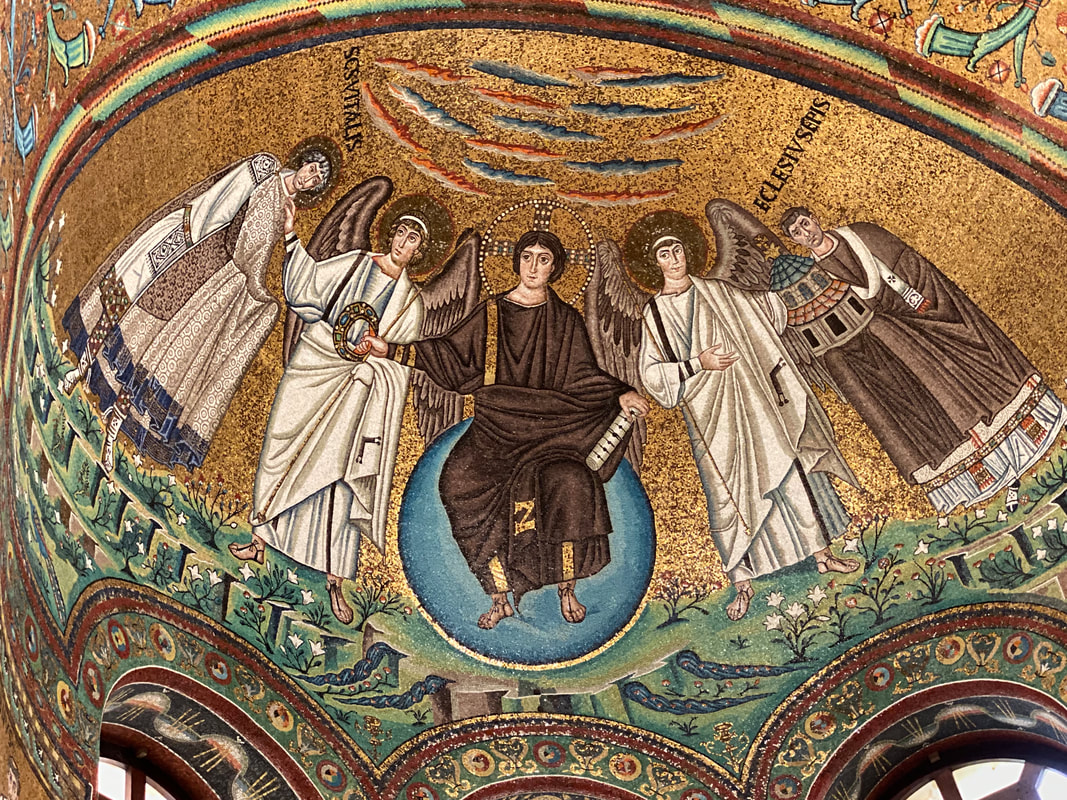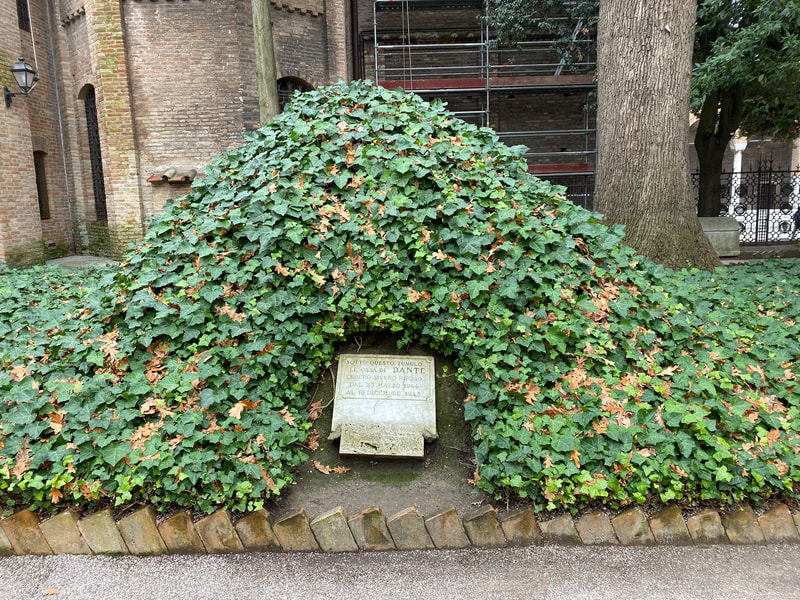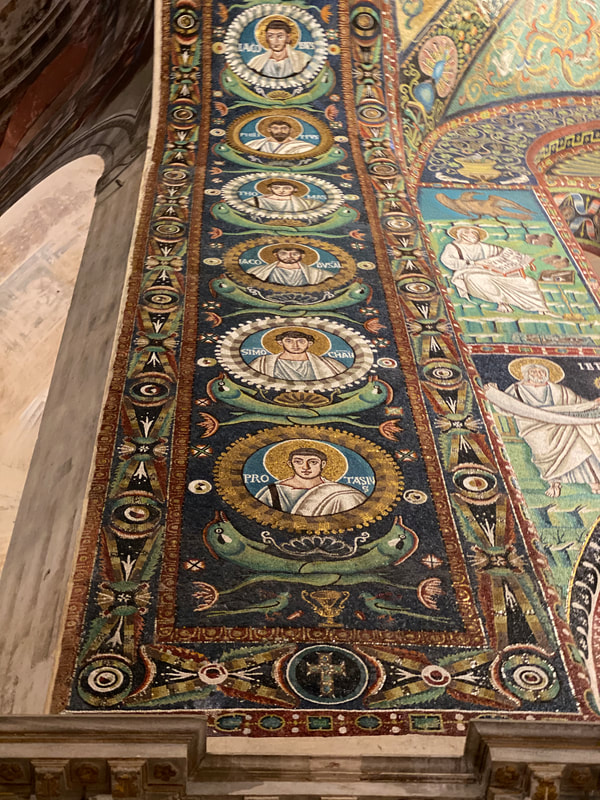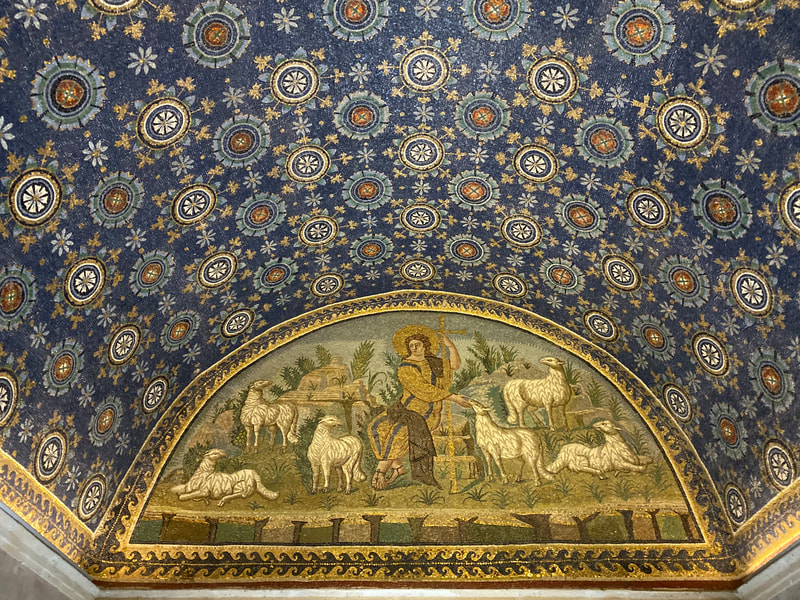|
Great and rich in traditions, Ravenna is a destination to put in your bucket list if you visit the Emilia-Romagna region. This place is an art and history lover’s dream, most famous for its extensive mosaics. It has eight UNESCO world heritage sites and this town hosts the most impressive collection of Byzantine mosaics outside of Istanbul. It is a comfortable and friendly town without the tourist hordes. Ravenna is not a port of call for cruise ships or fleets of tourist buses and the majority of visitors are Italian. When you enter one of the world’s oldest churches, you have the luxury to enjoy the ancient mosaics at your own pace. When you visit a cafe, you are surrounded by locals and can stay as long as you like which means that a visit to Ravenna is also a chance to experience Italy at a slower pace. The quiet streets of Ravenna Caffe Corte Cavour Before heading to the town center, Alessandro (my Italian friend/private tour guide) took me to this covered alley off the busy Cavour street. The alley opens up to a courtyard and what a nice surprise - posto super bello...Caffe Corte Cavour...!!! There are a few shops around but in the middle is a small fountain and the Caffe. It was a cold morning and we stopped to rest and have coffee and piadina (a simple yet tasty flatbread that is a local staple. It’s normally stuffed with local salami, rucola, and cheese). The area is very beautiful and has a really nice atmosphere. This restaurant has won culinary awards (displayed inside the caffe) and the food certainly demonstrates it. From top left: the indoor seating area of the Caffe; breakfast of coffee and piadina with rucola and cheese; enjoying my cup of coffee; the Caffe’s menu; the Caffe’s signage; the courtyard proper Basilica di San Francesco and the Flooded Crypt If you see this church from the outside, it is big and made of brick stone and built in simple structure. In this church, the funeral of the “Supreme Poet Dante” was celebrated in 1321. Chiesa di San Francesco is not as grand as the other churches I visited in Italy but the mosaics under water at the back of the church are pretty special and very interesting. Under the high altar, consisting of a 5th century sarcophagus, through a window you can see a crypt supported by pillars. The floor is submerged in water whose level varies according to the tides. In order to see them though, you have to insert a 2 Euro coin for the lights to turn on. Filled with goldfish swimming in a shallow pool of sea water, this ancient crypt is more wishing well than a burial site. Visitors often threw coins into the crypt, maybe asking for wishes or good luck. But I was thinking...it is essentially a grave...so who will be answering those requests? Your guess is as good as mine....boooo...!!! From top left: The high altar of Basilica di San Francesco; the mosaics are visible when the crypt is lit From L to R: Basilica di San Francesco and it’s piazza; and while waiting for the church to open...that was me...sitting...psssssst. Dante Alighieri’s Tomb - an Italian Soap Opera History tells us that Dante was born in Florence, but due to his political activities, he was banned from the city and lived in exile for 20 years. He ended up in Ravenna and died there three years later. It was during his exile years that he wrote his masterpiece, The Divine Comedy. It took the Florentines approximately two hundred years to get over Dante’s political affiliations and realize they wanted the city’s most famous figure back. The decisive push came when Leone X, a Florentine, was elected pope. He sent a delegation to Ravenna to pick up Dante’s bones and bring them back to Florence. But, as the story goes, when the group opened the sarcophagus, the remains weren’t there. The Franciscan monks in charge of Dante’s body had moved them and refused to reveal where they were. And during WWII, from March 1944 to December 1945, Dante’s urn was buried in a mound of earth right next to the mausoleum because it was feared that his tomb would suffer from the bombings. Luckily, it didn’t happen. From top left: Behind me is the mound of earth where they bury Dante’s urn during WWII; the facade of Dante’s mausoleum; sneak peek of the mausoleum’s interior - the space might be small but what it lacks in space it supplies in details. Goosebumps....!!! The Mosaics of Basilica di San Vitale The church’s exterior is very plain but don’t be fooled — it is so impressive and so stunning. The church has an octagonal center with a central dome. This octagon is surrounded by high arches, which give access to a series of arcades. This gives the building a surprising lightness, both in terms of illumination and building structure. In addition to the magnificent architecture, the mosaics in San Vitale are the main attractions. These are considered the largest and best-preserved Byzantine mosaics outside modern-day Istanbul. The Basilica of San Vitale is said to have been the model for Constantinople’s Hagia Sophia, built 10 years later. Comparing it to food, for me, Dante’s Tomb and Basilica di San Francesco were only the appetizers. The Basilica of San Vitale was the main dish. Inside, you will find some of the finest examples of Byzantine artworks in Italy. Baroque frescoes, an octagonal Roman floor, glittering mosaics and domes that descends into columns. The mosaics show portraits of the Holy Roman Emperor Justinian and his wife Theodora. Hmmm....power couple. The brilliant, color, depth, and detail of the mosaics is pretty impressive and the little tiles cover almost every surface of the church, even the arches and walls. I had a “neck crick” staring up at them all...and I lost count of how many times I said “wow”. It was truly a woooooooww...! The Basilica di San Vitale is entered from the back through the complex and cloisters that houses the National Museum. L to R: The liturgical procession of Theodora and the imperial court; beardless Christ seated on a blue globe holding a scroll closed with the seven seals of the Apocalypse flanked by angels and St. Vitalis (left) and Bishop Ecclesius (right). The stunning interiors of San Vitale — astonishingly covered with tiny gold and glass mosaics. L to R: Vault with Lamb of God, flowers, fruits, birds and other animals illustrating Revelation 5:13; the interior of the dome with Baroque frescoes from the late 18th century. L to R: the basilica’s floor, hinde sila nagtipid sa mosaics; and the triumphal arch mosaics of Jesus Christ and the Apostles. The Mausoleum of Galla Placidia Across the courtyard from the basilica is the Mausoleum of Galla Placidia - she was the daughter, sister, and Mother of Emperors. The mausoleum honors her life. From the outside, the building appears humble and nondescript. But the interior is intimate and alive with shimmering precious stones and gold. Inside are the oldest mosaics in Ravenna and 95% of the mosaics are originals. So much detail in such a small space left me in awe. Except for the lower part of the wall clad with yellow marbles, the rest of the walls and ceiling of the mausoleum is completely covered in mosaics. The UNESCO documents describe the Mausoleum of Galla Placidia as the artistically most perfect of all the mosaics in Ravenna. It is the perfect blend of the Hellenistic-Roman artistic tradition with the iconography of Christianity. L to R: the southern lunette (an arched aperture or window) shows Saint Lawrence with a gridiron; the northern lunette shows Christ the Shepherd surrounded with sheeps. The main bay of the mausoleum L to R: The entrance to the mausoleum; and the mausoleum’s building as seen from the back of San Vitale Ravenna is fairly small, and you can see its major sites in just a few hours, making it an excellent candidate for a day trip–and it’s also a very peaceful town. If you seek an authentic Italian experience away from crowds of tourists - you will love Ravenna. If you are passionate about history and art - you’ll love Ravenna. I certainly loved my time here.
Let me finish this article with a photo gallery that highlights some of what Ravenna offers.
2 Comments
Matetskie
5/22/2020 20:41:46
How inspiring...nice photos. I feel like I was there too. Thank you for the rich-knowledge-packed tour.
Reply
Matetskie
5/22/2020 20:51:06
Thank you Matet...!!!
Reply
Your comment will be posted after it is approved.
Leave a Reply. |
Archives
May 2020
Lea DalawisA corporate employee by profession, a home cook, an avid foodie, an obsessive cooking books collector, a wanna-be-food photographer, a budding Writer, a DIY fan, and a Traveller. Categories |














































 RSS Feed
RSS Feed

